Abstract
Proton magnetic resonance has been used to study the association of inhibitors and substrates with hen egg-white lysozyme. Changes in chemical shift, due to association, of acetamido methyl group resonances of the small molecules have been quantitated. This has allowed definition of magnetic parameters for three contiguous binding subsites on the enzyme surface. The relative modes of occupancy of these sites by N-acetyl-D-glucosamine (NAG), chitobiose, chitotriose, their methyl glycosides, and chitotetraose have been delineated. In addition, the binding to these sites of N-acetyl-D-muramic acid (NAM) and a cell-wall disaccharide, NAG-NAM, have been studied. There is good, although not complete, agreement between the results obtained and X-ray analysis studies of the binding of some of these inhibitors to crystalline lysozyme. Binding of synthetic substracts, such as p-nitrophenyl-2-acetamido-4-O-(2-acetamido-2-deoxy-β-D -glucopyranosyl)-β-D-glucopyranoside (NAG-Gluc-ϕNO2), has also been studied by the magnetic resonance technique described.
Full text
PDF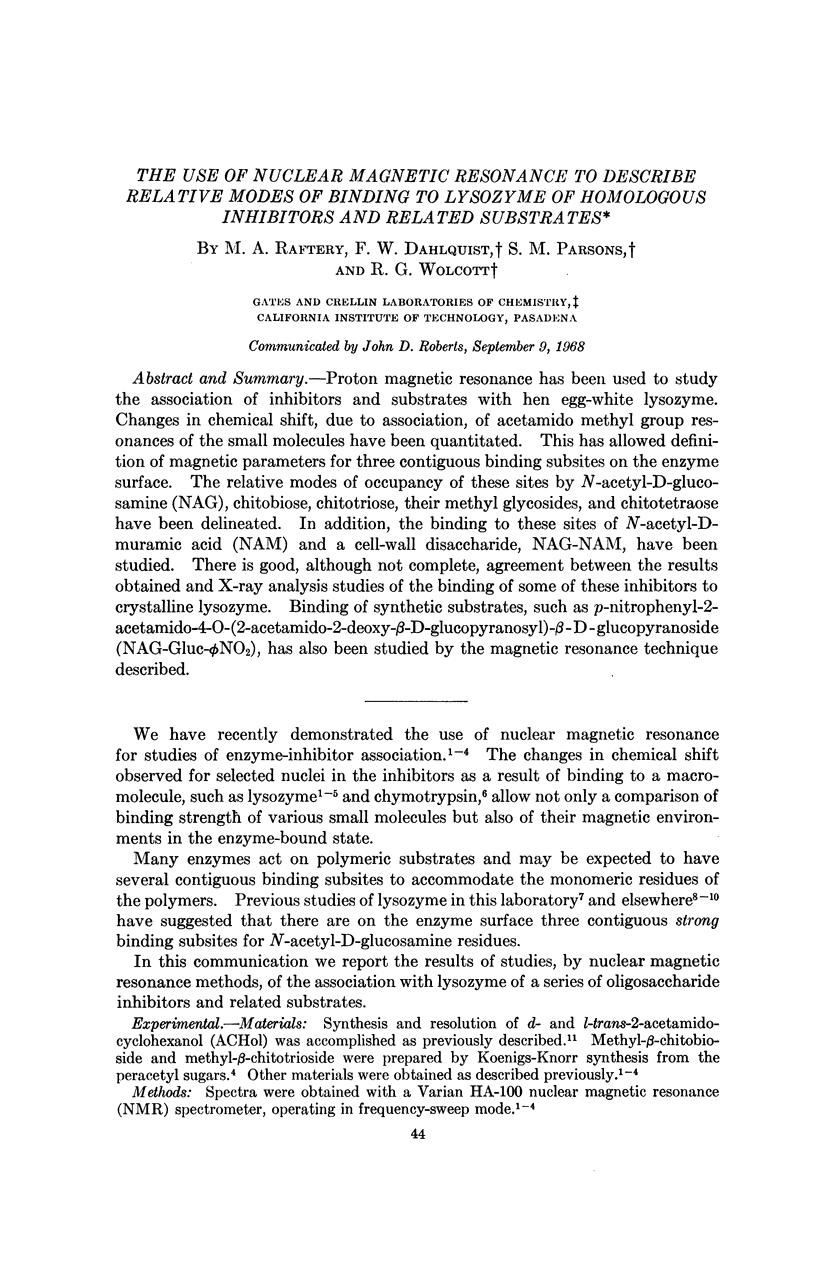
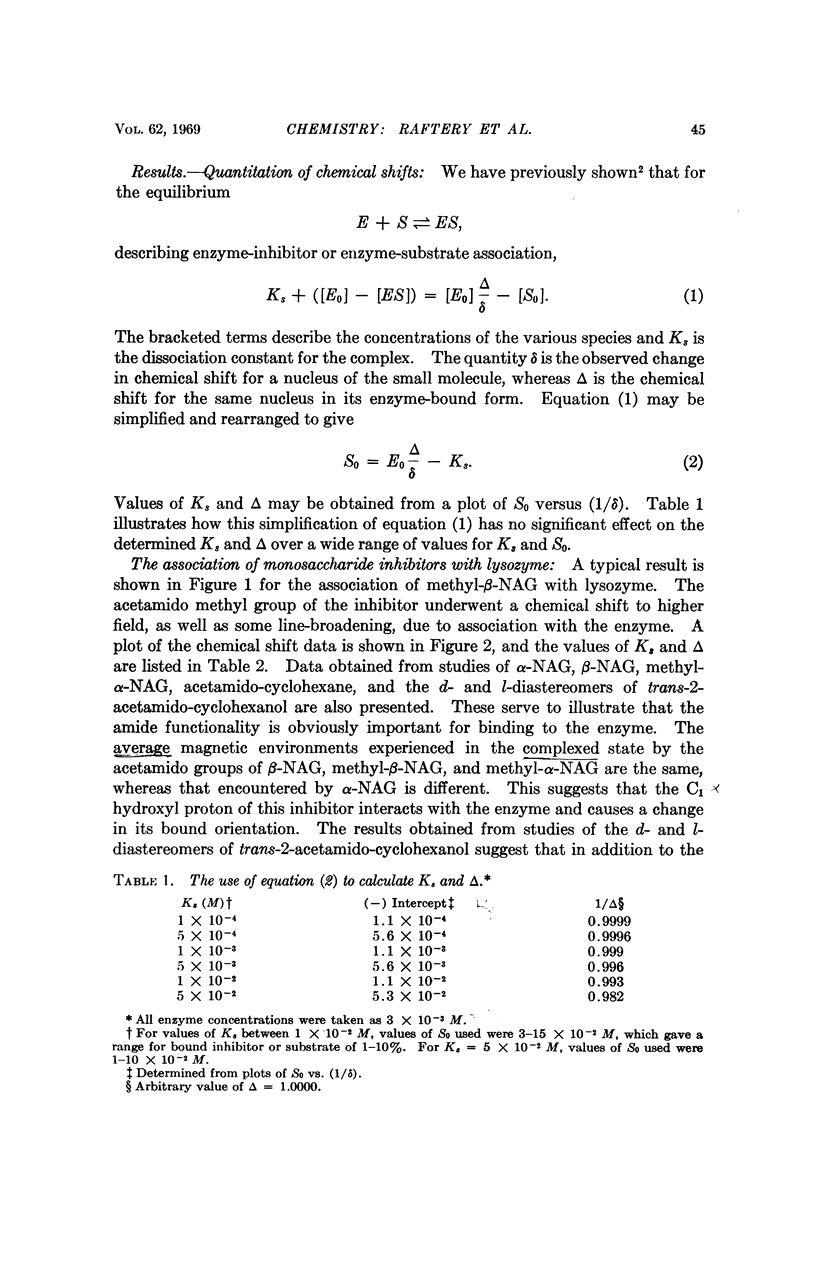
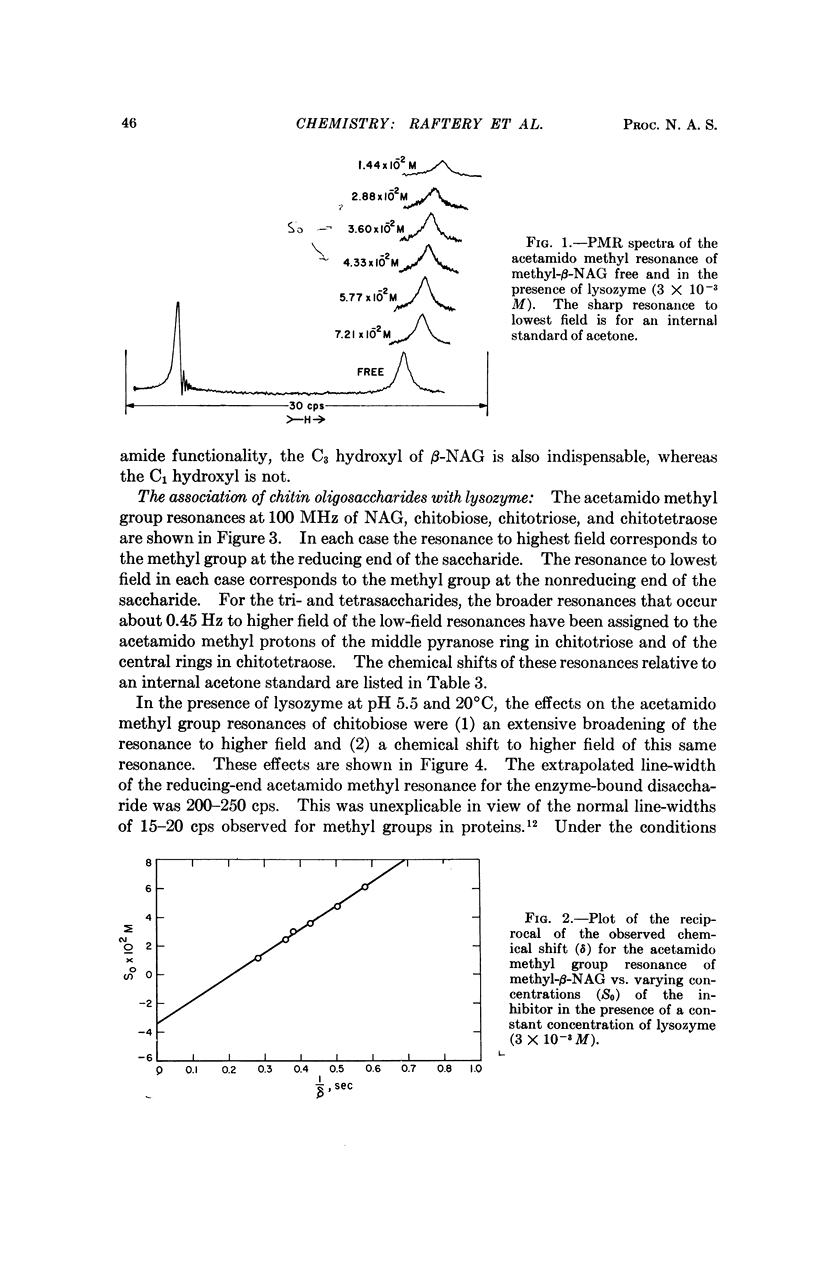
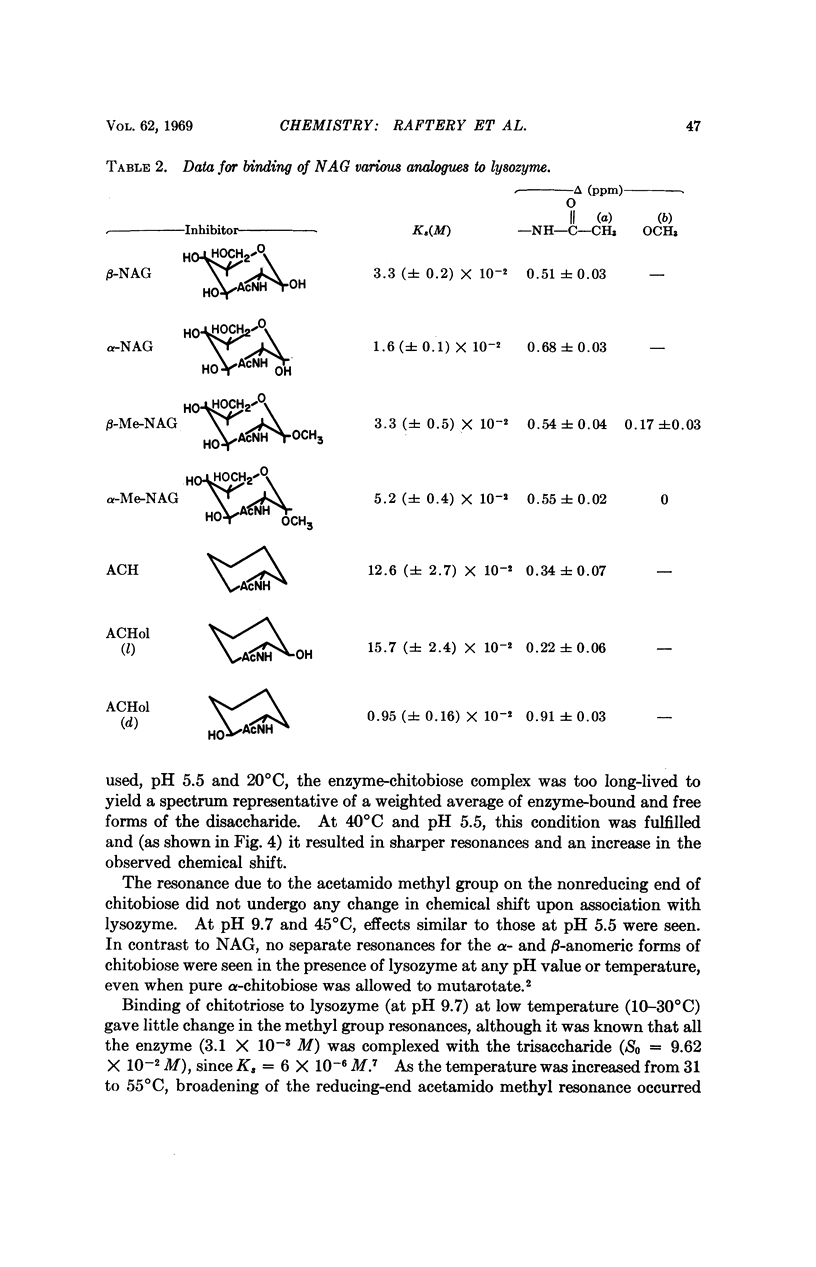
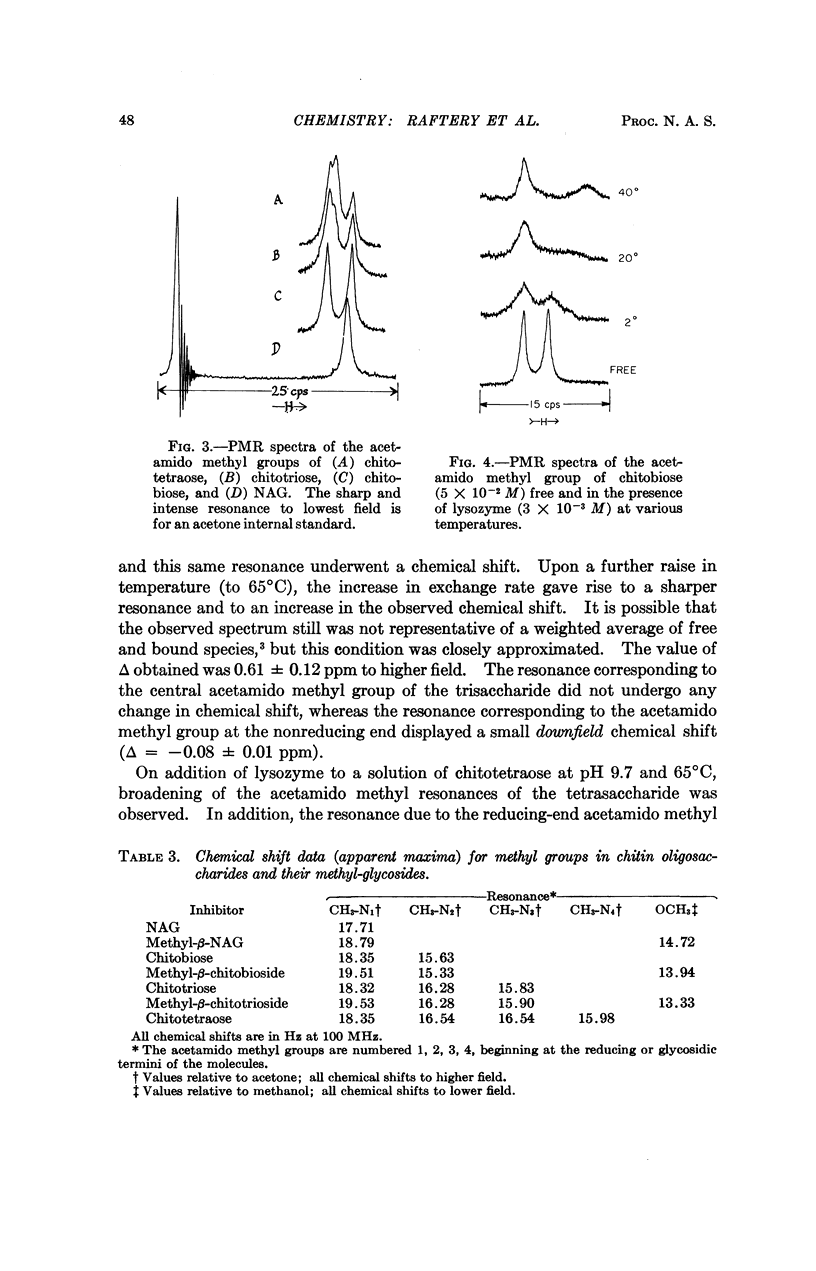
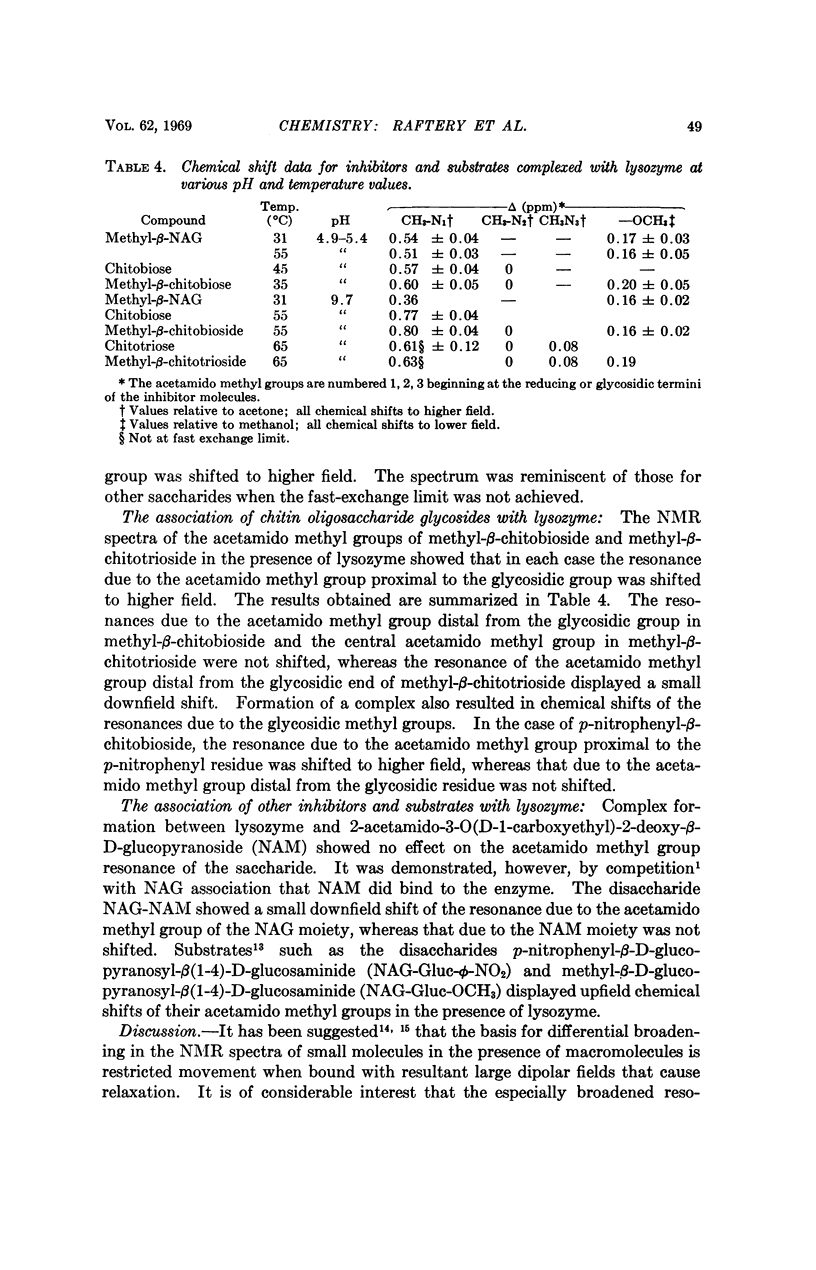
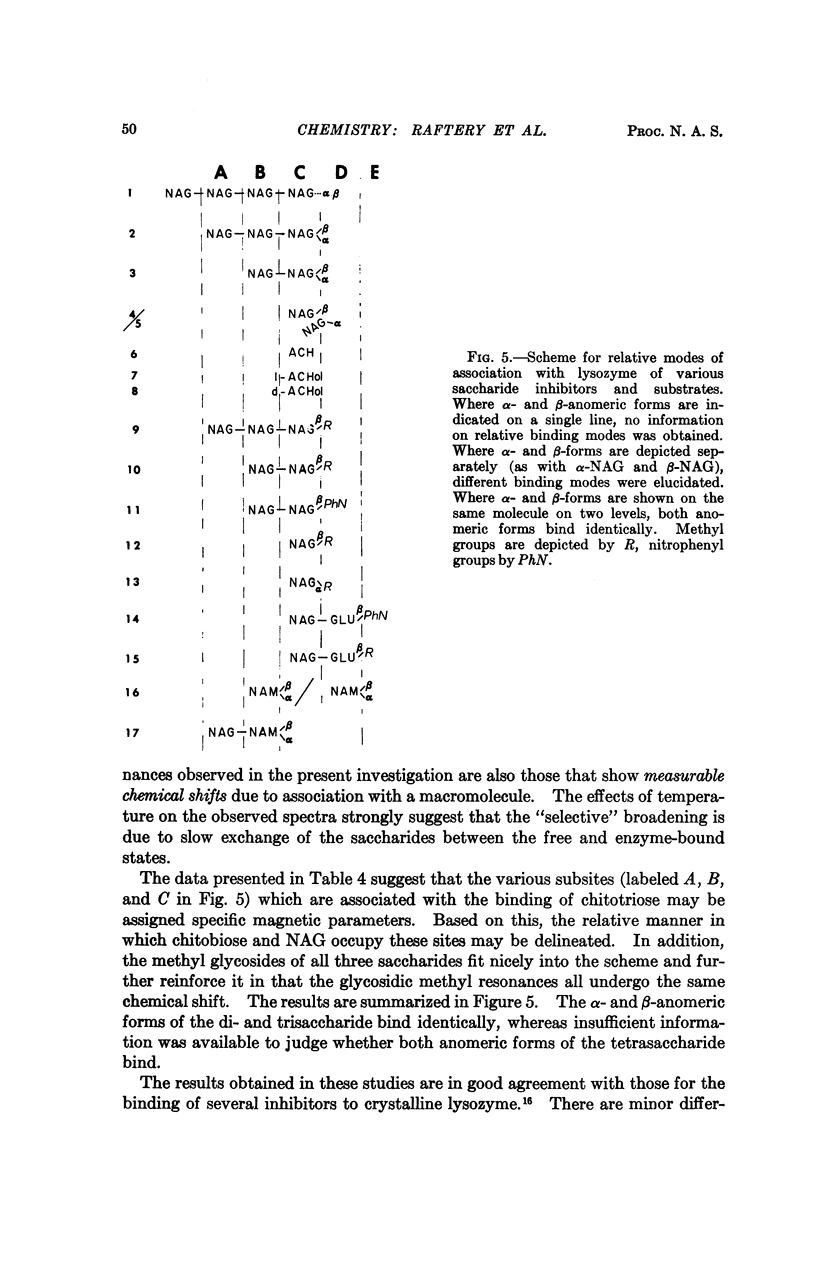

Selected References
These references are in PubMed. This may not be the complete list of references from this article.
- Blake C. C., Mair G. A., North A. C., Phillips D. C., Sarma V. R. On the conformation of the hen egg-white lysozyme molecule. Proc R Soc Lond B Biol Sci. 1967 Apr 18;167(1009):365–377. doi: 10.1098/rspb.1967.0034. [DOI] [PubMed] [Google Scholar]
- Chipman D. M., Grisaro V., Sharon N. The binding of oligosaccharides containing N-acetylglucosamine and N-acetylmuramic acid to lysozyme. The specificity of binding subsites. J Biol Chem. 1967 Oct 10;242(19):4388–4394. [PubMed] [Google Scholar]
- Dahlquist F. W., Jao L., Raftery M. On the binding of chitin oligosaccharides to lysozyme. Proc Natl Acad Sci U S A. 1966 Jul;56(1):26–30. doi: 10.1073/pnas.56.1.26. [DOI] [PMC free article] [PubMed] [Google Scholar]
- Dahlquist F. W., Raftery M. A. A nuclear magnetic resonance study of association equilibria and enzyme-boud environments of N-acetyl-D-glucosamine anomers and lysozyme. Biochemistry. 1968 Sep;7(9):3269–3276. doi: 10.1021/bi00849a033. [DOI] [PubMed] [Google Scholar]
- Lehrer S. S., Fasman G. D. Fluorescence of lysozyme and lysozyme substrate complexes. Separation of tryptophan contributions by fluorescence difference methods. J Biol Chem. 1967 Oct 25;242(20):4644–4651. [PubMed] [Google Scholar]
- Raftery M. A., Dahlquist F. W., Chan S. I., Parsons S. M. A proton magnetic resonance study of the association of lysozyme with monosaccharide inhibitors. J Biol Chem. 1968 Aug 25;243(16):4175–4180. [PubMed] [Google Scholar]
- Raftery M. A., Rand-Meir T. On distinguishing between possible mechanistic pathways during lysozyme-catalyzed cleavage of glycosidic bonds. Biochemistry. 1968 Sep;7(9):3281–3289. doi: 10.1021/bi00849a035. [DOI] [PubMed] [Google Scholar]
- Rupley J. A., Butler L., Gerring M., Hartdegen F. J., Pecoraro R. Studies on the enzymic activity of lysozyme, 3. The binding of saccharides. Proc Natl Acad Sci U S A. 1967 Apr;57(4):1088–1095. doi: 10.1073/pnas.57.4.1088. [DOI] [PMC free article] [PubMed] [Google Scholar]
- Spotswood T., Evans J. M., Richards J. H. Enzyme--substrate interaction by nuclear magnetic resonance. J Am Chem Soc. 1967 Sep 13;89(19):5052–5054. doi: 10.1021/ja00995a047. [DOI] [PubMed] [Google Scholar]
- Thomas E. W. Interaction between diacetylchitobiose methyl glycoside and lysozyme as studied by NMR spectroscopy. Biochem Biophys Res Commun. 1967 Dec 15;29(5):628–634. doi: 10.1016/0006-291x(67)90262-8. [DOI] [PubMed] [Google Scholar]


